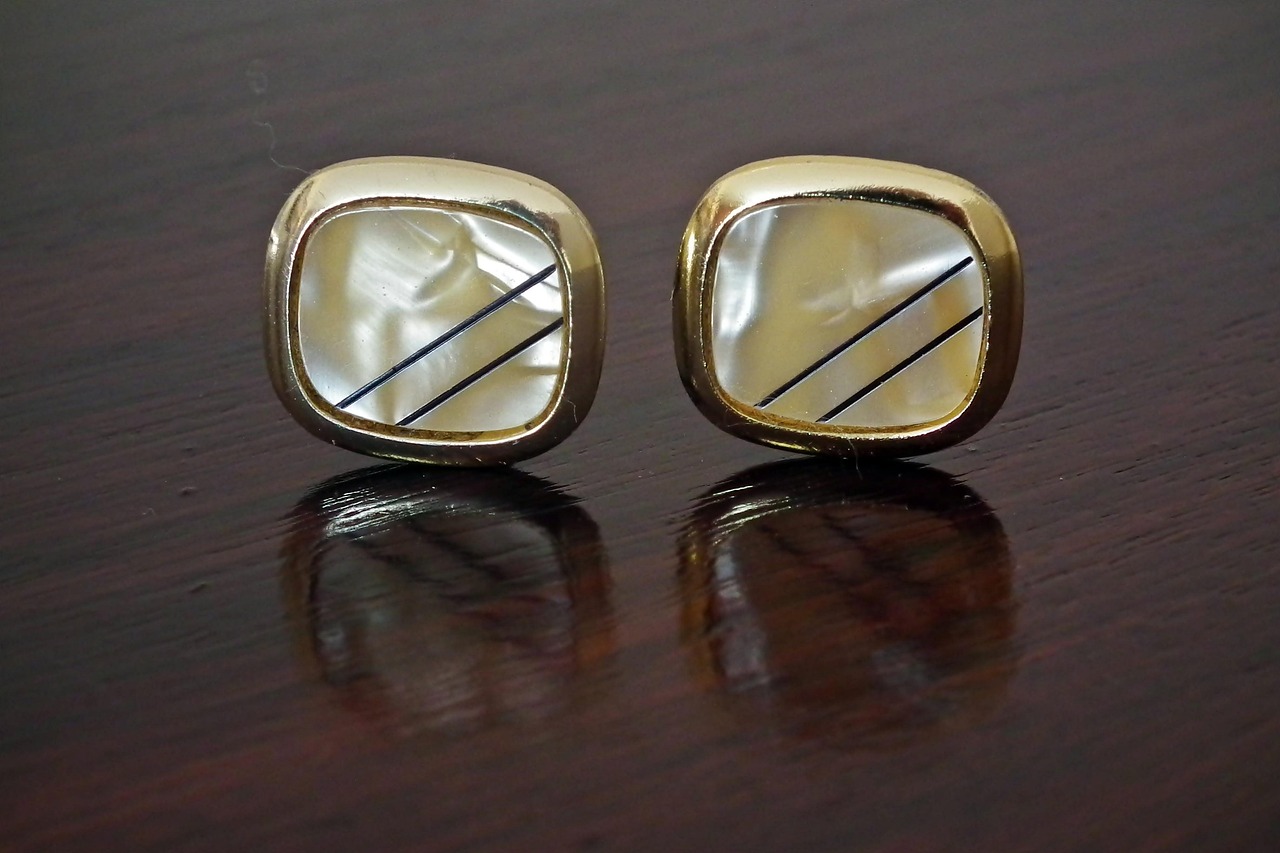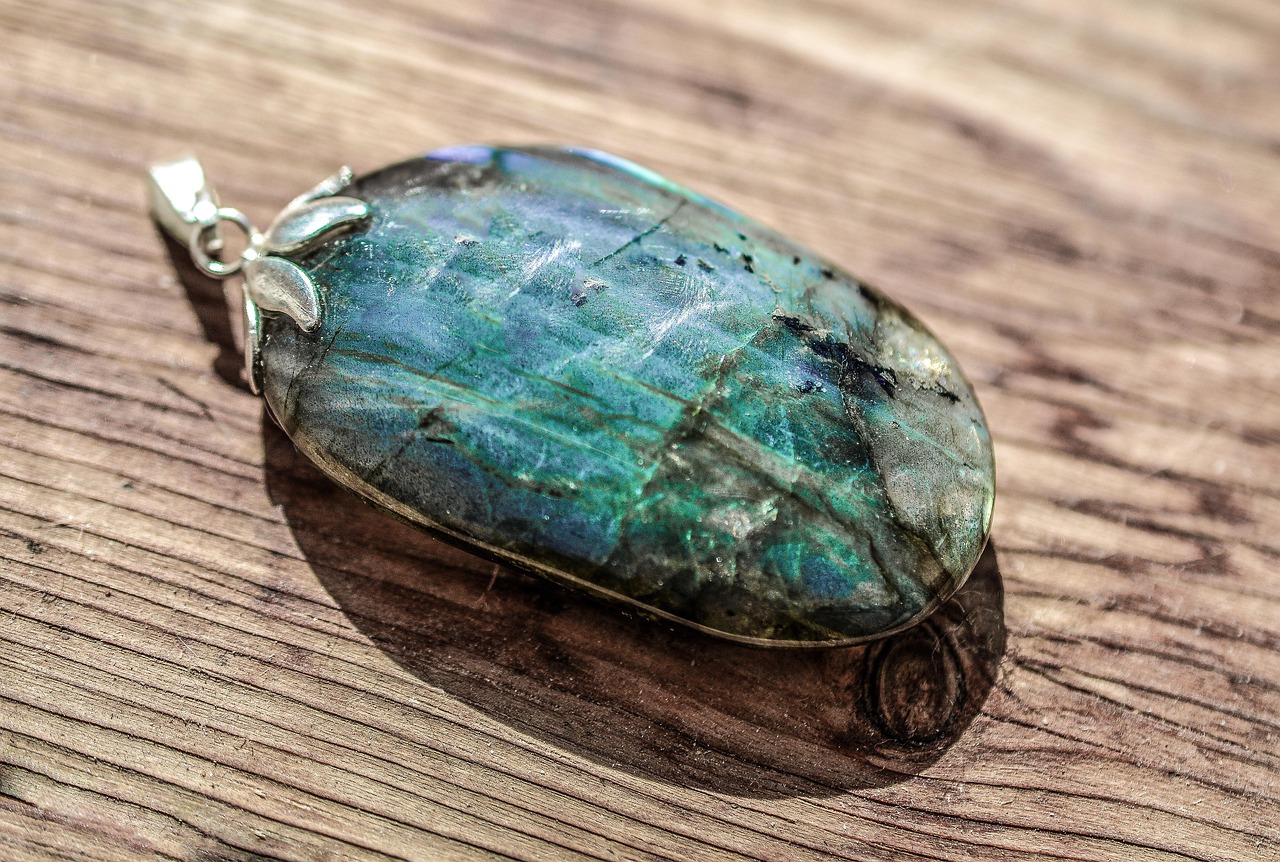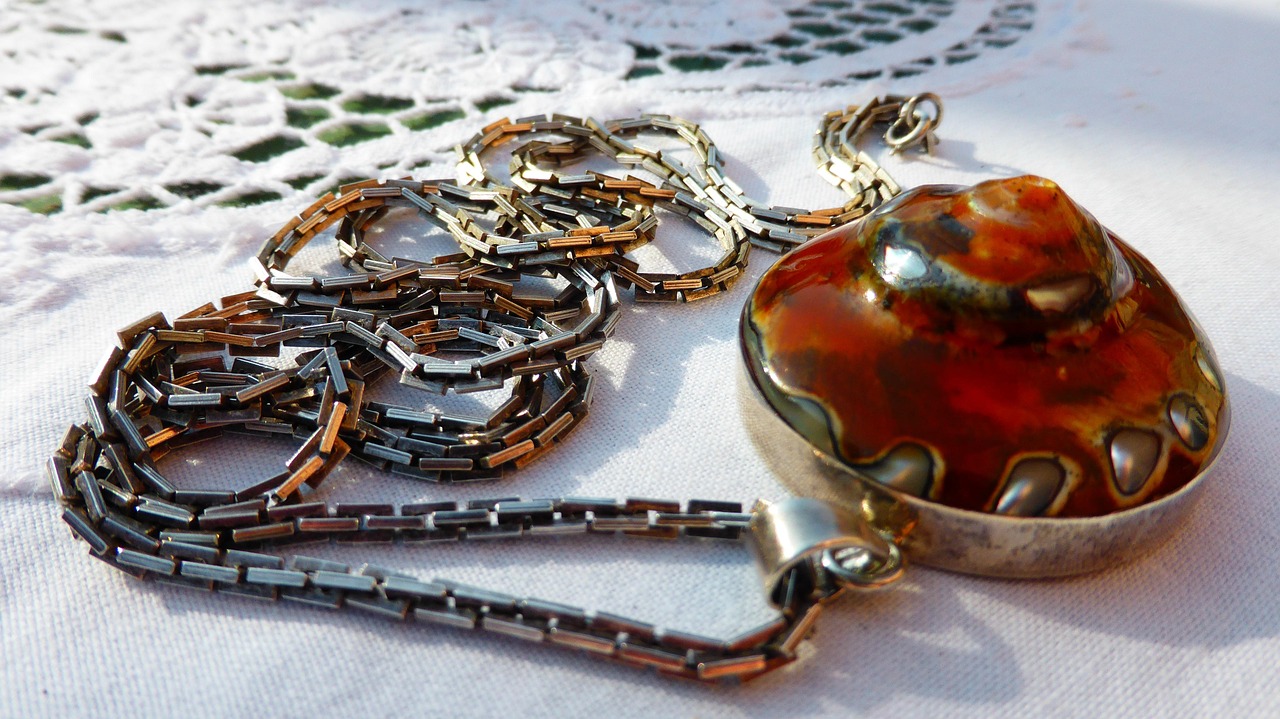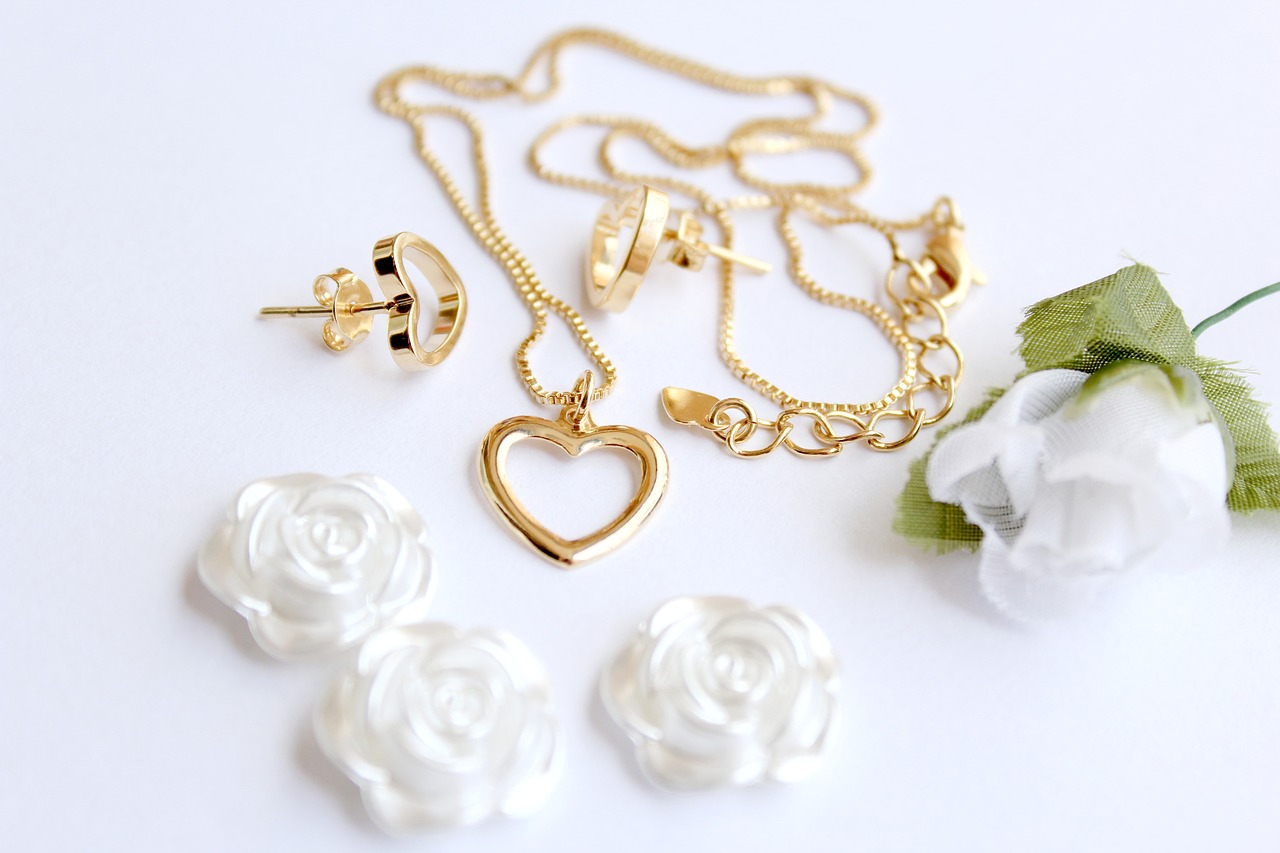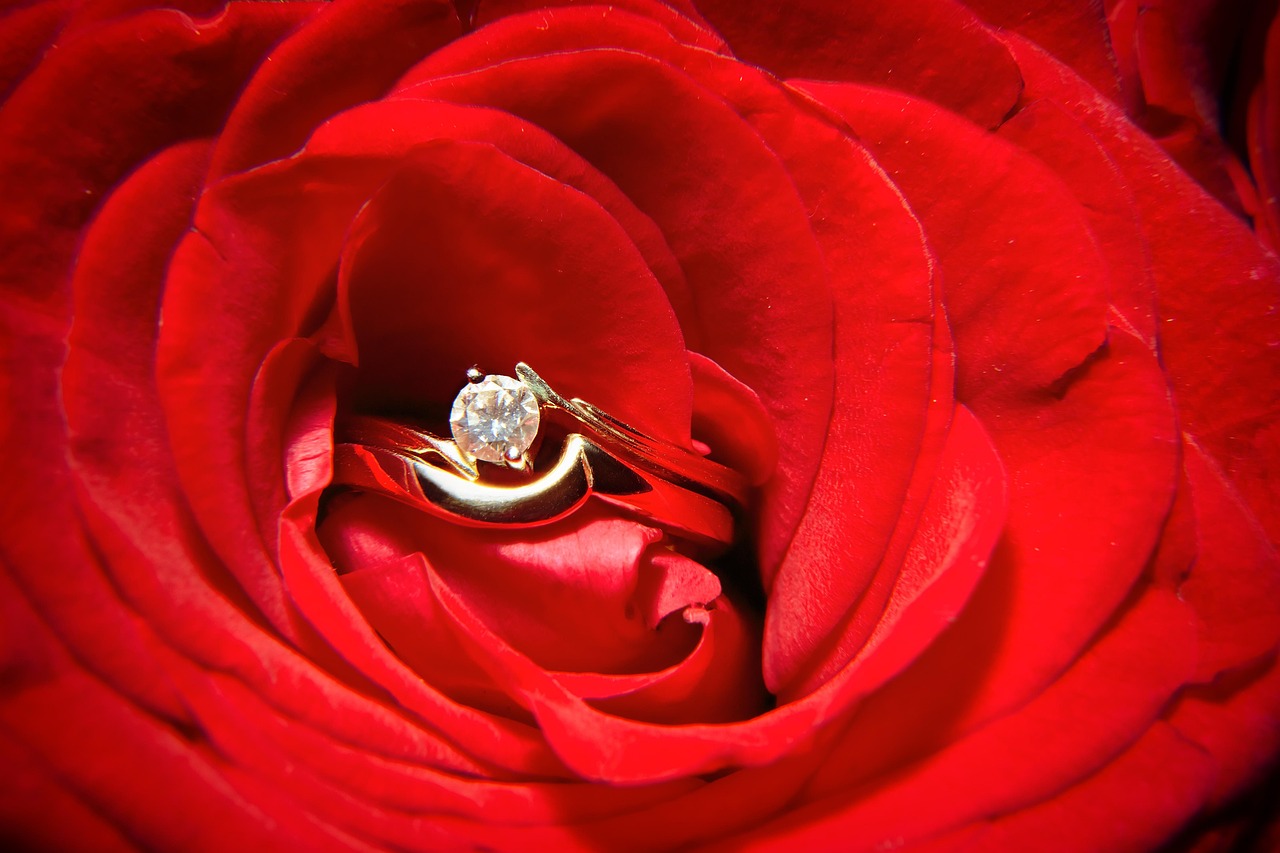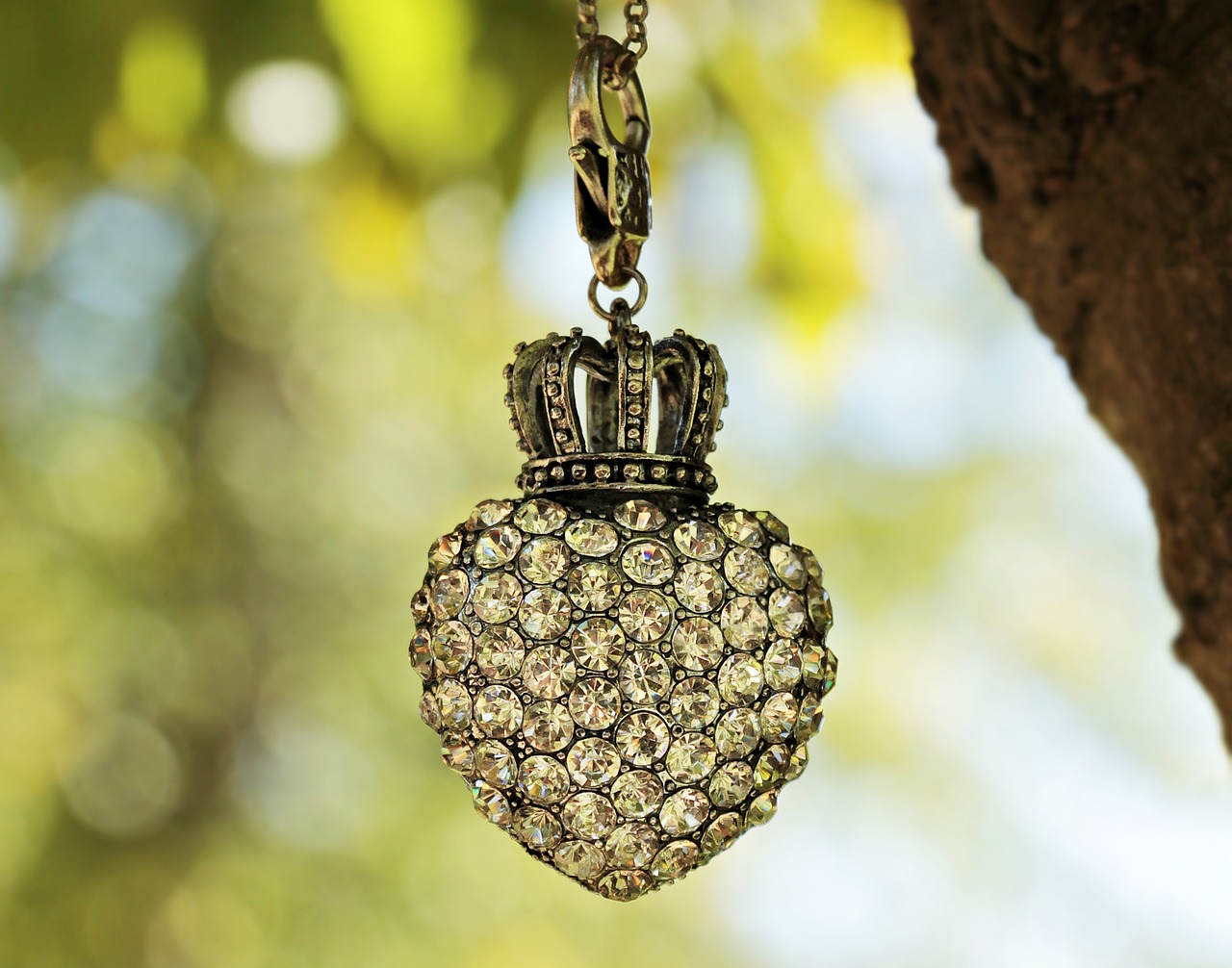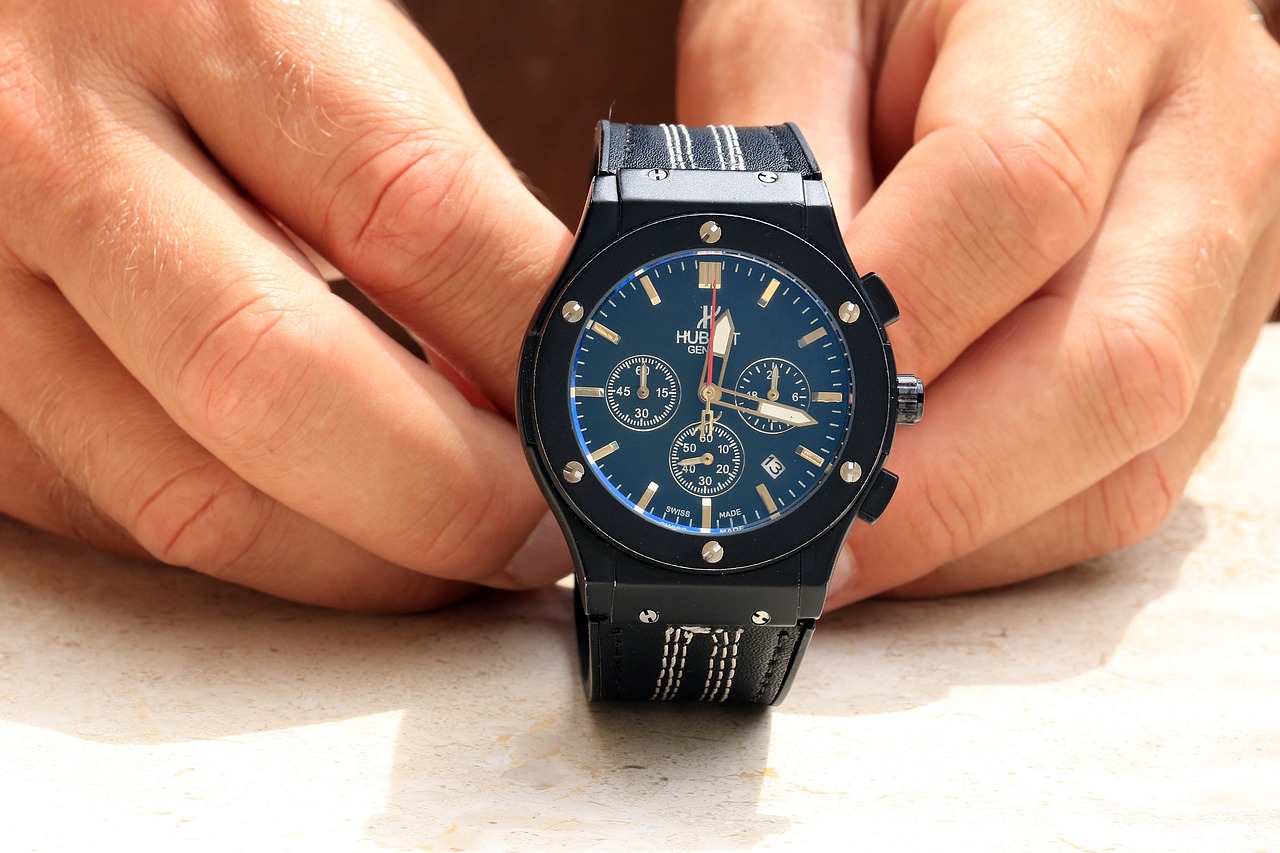This article explores the factors contributing to the prestige of designer jewelry brands, examining their history, craftsmanship, marketing strategies, and cultural significance in the luxury market.
What Defines Prestige in Designer Jewelry?
Understanding the elements that constitute prestige in designer jewelry is crucial. This includes brand heritage, exclusivity, and the craftsmanship that elevates a piece beyond mere ornamentation. Prestige is not just about the price tag; it is about the story behind the brand, the unique designs, and the emotional connections that consumers form with these exquisite pieces.
How Does Brand Heritage Influence Perception?
The history and legacy of a jewelry brand play a significant role in its prestige. Brands with a storied past often command greater respect and desirability among consumers. For instance, brands like Tiffany & Co. and Cartier have cultivated a rich heritage that resonates with luxury and sophistication. Their long-standing traditions and iconic designs contribute to a perception of quality and exclusivity.
What Role Does Craftsmanship Play?
Exceptional craftsmanship is a hallmark of designer jewelry. The meticulous attention to detail and artisanal techniques used in creating these pieces contribute to their allure and value. Each piece is often handcrafted, showcasing the skill and dedication of artisans who pour their heart and soul into their creations. This level of craftsmanship not only enhances the aesthetic appeal but also ensures durability, making these items worthy investments.
How Are Materials Selected for Luxury Jewelry?
The choice of materials, such as rare gemstones and precious metals, significantly impacts the prestige of designer jewelry. High-quality materials enhance both the aesthetic and monetary value. For example, diamonds that are ethically sourced and of the highest grade can elevate a piece from ordinary to extraordinary. This careful selection process reflects the brand’s commitment to quality and sustainability.
What Techniques Enhance Jewelry Quality?
Techniques such as hand-setting stones and intricate metalwork are essential in luxury jewelry. These methods not only improve durability but also elevate the overall design. The use of innovative techniques, like 3D printing and advanced stone-setting methods, allows designers to push the boundaries of creativity while maintaining high standards of quality.
What Is the Impact of Limited Editions?
Limited edition releases create a sense of urgency and exclusivity. This strategy effectively drives demand and enhances the perceived value of designer jewelry. By producing a limited number of pieces, brands can ensure that their creations remain coveted, appealing to collectors and connoisseurs who value uniqueness.
How Does Marketing Shape Brand Prestige?
Effective marketing strategies are vital in establishing and maintaining the prestige of designer jewelry brands. This includes collaborations with renowned designers, celebrity endorsements, and targeted advertising campaigns that resonate with luxury consumers. The narrative crafted around a brand can significantly influence consumer perceptions and drive desirability.
What Role Do Social Media and Influencers Play?
In today’s digital age, social media and influencers significantly impact consumer perceptions. Brands leverage these platforms to showcase their exclusivity and craftsmanship. Engaging content, such as behind-the-scenes glimpses into the design process or influencer partnerships, helps create a community around the brand, enhancing its prestige.
How Do Events and Sponsorships Enhance Visibility?
Participating in high-profile events and sponsorships helps designer jewelry brands gain visibility. These efforts reinforce their status and connect them with luxury lifestyles. By associating with prestigious events, brands can align themselves with the values and aesthetics of their target audience.
What Cultural Significance Do Designer Jewelry Brands Hold?
Designer jewelry often transcends mere adornment; it embodies cultural values and social status. Understanding this significance can provide insight into why these brands are so revered. Jewelry can symbolize milestones, achievements, and personal stories, making it an integral part of cultural expression.
How Do Jewelry Trends Reflect Societal Changes?
Jewelry trends often mirror societal shifts, influencing consumer preferences and brand strategies. This connection underscores the dynamic nature of designer jewelry in contemporary culture. For example, the rise of sustainable practices reflects a growing awareness of environmental issues among consumers.
What Is the Role of Sustainability in Modern Luxury?
As sustainability becomes a priority for consumers, designer jewelry brands are adapting. This shift toward ethical practices can enhance prestige and appeal to a conscious audience. Brands that prioritize sustainable sourcing and production methods are not only meeting consumer demands but also setting new standards in the luxury market.
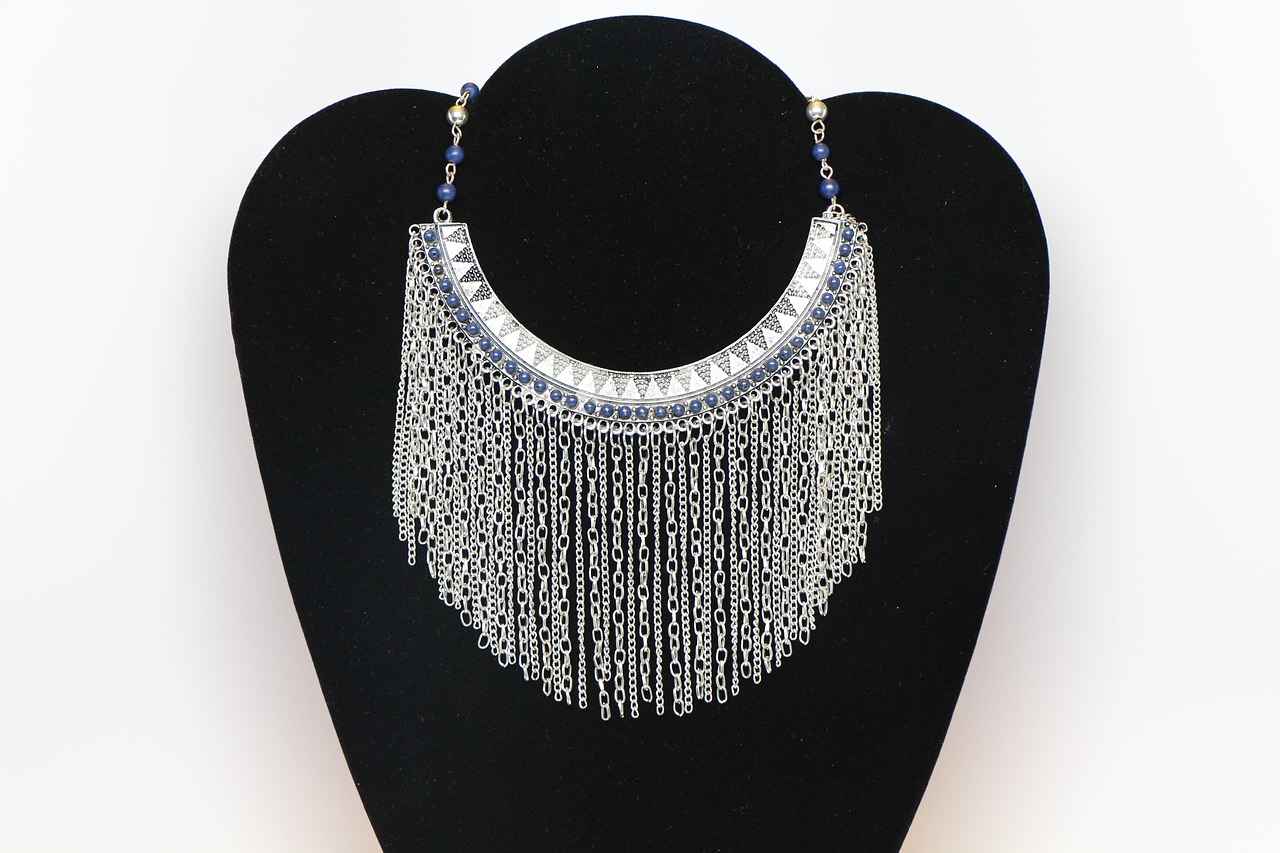
What Defines Prestige in Designer Jewelry?
When it comes to designer jewelry, the concept of prestige is multifaceted and deeply rooted in various elements that work in harmony. Understanding these factors is essential for anyone looking to appreciate the true value of these exquisite pieces. The prestige associated with designer jewelry is not merely about aesthetics; it encompasses a rich tapestry of brand heritage, exclusivity, and unparalleled craftsmanship.
The heritage of a jewelry brand is a significant determinant of its prestige. Brands that have been established for decades, or even centuries, often carry a legacy that adds to their allure. This heritage is built on a history of innovation, quality, and artistry, which resonates with consumers seeking authenticity. For instance, brands like Cartier and Tiffany & Co. have cultivated a narrative that intertwines their creations with historical events and cultural milestones, elevating their status in the luxury market.
Exclusivity plays a pivotal role in defining the prestige of designer jewelry. Limited edition pieces or bespoke designs create a sense of urgency and desirability among consumers. When a piece is available in restricted quantities, it becomes a symbol of status and wealth. This strategy not only drives demand but also fosters a community of collectors who value the rarity of their acquisitions. The allure of owning something that few others possess significantly enhances the perceived value of designer jewelry.
Exceptional craftsmanship is a hallmark of luxury jewelry. The meticulous attention to detail, the use of traditional techniques, and the artistry involved in creating these pieces contribute to their overall allure. Each piece of designer jewelry is often handcrafted, ensuring that it meets the highest standards of quality. Techniques such as hand-setting stones and intricate metalwork not only enhance durability but also elevate the design, making each piece a work of art. This dedication to craftsmanship is what separates designer jewelry from mass-produced alternatives, adding to its prestige.
The selection of materials is another critical factor that influences the prestige of designer jewelry. High-quality materials, such as rare gemstones and precious metals, significantly enhance both the aesthetic appeal and monetary value of a piece. For example, diamonds that are ethically sourced and exhibit exceptional clarity and color are highly sought after. The use of sustainable materials is becoming increasingly important, as consumers are now more conscious of the environmental impact of their purchases.
Effective marketing strategies are vital in shaping the prestige of designer jewelry brands. Collaborations with renowned artists, celebrity endorsements, and targeted advertising campaigns help to create a narrative that resonates with consumers. Social media platforms have also become essential tools for brands to showcase their exclusivity and craftsmanship. By engaging with influencers and leveraging visual storytelling, brands can enhance their visibility and appeal to a broader audience.
Designer jewelry often transcends mere adornment; it embodies cultural values and social status. The cultural significance of jewelry can provide insight into why certain brands are revered. Jewelry trends frequently reflect societal changes, influencing consumer preferences and brand strategies. For instance, the rise of sustainable luxury has prompted brands to adopt ethical practices, which can enhance their prestige among conscious consumers.
In conclusion, the prestige of designer jewelry is a complex interplay of brand heritage, exclusivity, craftsmanship, material choices, and effective marketing. Understanding these elements not only enriches the appreciation of designer jewelry but also highlights its significance in the luxury market.

How Does Brand Heritage Influence Perception?
The influence of a jewelry brand’s heritage on consumer perception is profound and multifaceted. A brand’s history often serves as a narrative that connects the consumer to its legacy, evoking feelings of trust and admiration. Heritage encapsulates the brand’s journey, its milestones, and the artisans who have contributed to its identity over time. This rich background not only enhances the brand’s allure but also solidifies its place in the luxury market.
What Makes a Brand’s History Valuable?
When a jewelry brand boasts a storied past, it often translates into greater respect and desirability among consumers. For instance, brands that have been around for generations, such as Cartier or Tiffany & Co., have established themselves as symbols of luxury and quality. Their history allows them to tell a story that resonates with consumers, making each piece more than just an accessory; it becomes a part of a larger narrative of craftsmanship and tradition.
How Do Historical Events Shape Brand Identity?
Significant historical events can also shape a brand’s identity. For example, a jewelry brand that has adorned royalty or celebrities may leverage this association to enhance its prestige. Endorsements from notable figures or involvement in significant cultural moments can create a powerful perception of exclusivity and desirability.
Why Is Craftsmanship Tied to Heritage?
Another crucial aspect of brand heritage is the craftsmanship that accompanies it. Brands that have honed their skills over decades or even centuries often produce pieces that reflect meticulous attention to detail. This craftsmanship is a testament to the brand’s commitment to quality and excellence, further enhancing its prestige. Consumers are often willing to pay a premium for pieces that showcase this level of artistry, as it signifies a connection to the brand’s rich history.
How Do Marketing Strategies Leverage Heritage?
Effective marketing strategies play a pivotal role in amplifying a brand’s heritage. By highlighting their history in advertising campaigns, brands can create a narrative that captivates potential customers. Storytelling becomes a powerful tool in this context, allowing brands to connect emotionally with their audience. This connection often leads to increased brand loyalty, as consumers feel they are part of a legacy when they purchase a piece of jewelry.
What Impact Does Exclusivity Have on Perception?
Exclusivity is another critical factor linked to brand heritage. Jewelry brands that release limited editions or have a select clientele often find that their heritage plays a significant role in creating a sense of urgency and desire among consumers. The notion that a piece is part of a historical collection or is linked to a specific time period can elevate its perceived value, making it a coveted item.
How Does Cultural Context Influence Brand Heritage?
The cultural significance of a brand’s heritage can also influence its perception. In some cultures, jewelry is not merely an accessory but a symbol of status and tradition. Brands that align themselves with these cultural values can enhance their prestige and desirability. Understanding the cultural context in which a brand operates can provide valuable insights into its heritage and how it is perceived by consumers.
In summary, a jewelry brand’s heritage plays an essential role in shaping consumer perception. Through a combination of history, craftsmanship, marketing strategies, and cultural significance, brands can establish themselves as prestigious entities in the luxury market. By understanding these elements, consumers can appreciate the depth and value of the pieces they choose to wear.
What Role Does Craftsmanship Play?
When it comes to designer jewelry, the role of craftsmanship cannot be overstated. Each piece is a testament to the skill and dedication of artisans who pour their heart and soul into their creations. This article delves into the intricate world of jewelry craftsmanship, highlighting its significance in defining the allure and value of designer pieces.
Craftsmanship serves as the foundation of quality in designer jewelry. The meticulous attention to detail ensures that each piece is not only aesthetically pleasing but also durable and functional. From the initial design sketches to the final polishing, every step is executed with precision, resulting in jewelry that stands the test of time.
Artisans utilize a variety of techniques to enhance the quality of their creations. Some of the most notable methods include:
- Hand-setting Stones: This technique involves carefully placing each gemstone into its setting, ensuring a secure fit and optimal brilliance.
- Intricate Metalwork: Skilled jewelers manipulate metals to create complex designs, adding depth and character to each piece.
- Engraving: This art form allows for personalized touches, making each item unique and tailored to the wearer.
The attention to detail in designer jewelry is what elevates it from ordinary to extraordinary. Each facet of a gemstone is cut to maximize its sparkle, while the metalwork is polished to perfection. Such meticulous craftsmanship not only enhances the visual appeal but also increases the overall value of the piece. Buyers are often willing to pay a premium for jewelry that exhibits superior craftsmanship, as it reflects the time and effort invested in its creation.
Designer jewelry often features premium materials that contribute to its prestige. The selection of materials is critical, as they must not only be beautiful but also durable. Common choices include:
- Precious Metals: Gold, silver, and platinum are frequently used due to their intrinsic value and timeless appeal.
- Rare Gemstones: Diamonds, sapphires, and emeralds are examples of stones that are highly sought after for their beauty and rarity.
Artisanal techniques play a crucial role in determining the final product’s quality. The use of traditional methods, such as lost-wax casting and hand-polishing, ensures that each piece maintains its unique character. These techniques not only enhance the physical attributes of the jewelry but also imbue it with a sense of history and craftsmanship that mass-produced items lack.
Brands that prioritize craftsmanship often enjoy a favorable reputation in the luxury market. High-quality craftsmanship signals to consumers that the brand values excellence and is committed to producing exceptional products. This commitment fosters customer loyalty and encourages word-of-mouth marketing, which can significantly boost a brand’s prestige.
In conclusion, the role of craftsmanship in designer jewelry is paramount. It not only defines the quality and durability of each piece but also enhances its allure and value. As consumers increasingly seek unique and high-quality items, the importance of skilled artisans and their techniques will continue to rise in the luxury jewelry market.
How Are Materials Selected for Luxury Jewelry?
The selection of materials in luxury jewelry is a pivotal factor that influences its overall appeal and value. When it comes to designer jewelry, the materials used are not merely functional; they are a statement of artistry, exclusivity, and prestige. This article delves into the intricacies of how materials are chosen for luxury jewelry, emphasizing the significance of rare gemstones and precious metals.
Rare gemstones, such as diamonds, emeralds, and rubies, are often the centerpiece of luxury jewelry. The rarity of these stones not only enhances their beauty but also significantly increases their monetary value. For instance, a flawless diamond can command prices that are exponentially higher than those of more common stones. The allure of these gemstones lies in their unique colors, clarity, and historical significance, making them highly sought after by collectors and connoisseurs alike.
The choice of metal is equally crucial in the creation of luxury jewelry. Precious metals like gold, platinum, and silver are favored for their durability and aesthetic appeal. Gold, for instance, is available in various karats, each signifying its purity. The higher the karat, the more valuable the piece. Platinum, known for its strength and rarity, is often used in high-end jewelry, further elevating the piece’s status. The choice of metal not only affects the jewelry’s appearance but also its longevity and wearability.
Exceptional craftsmanship plays a vital role in how materials are utilized in luxury jewelry. Skilled artisans employ various techniques to bring out the best in each material. For example, the hand-setting of stones ensures that each gemstone is perfectly positioned, maximizing its brilliance and allure. Additionally, intricate metalwork can transform simple materials into stunning pieces of art, showcasing the jeweler’s expertise and attention to detail.
In today’s market, the ethical sourcing of materials has become increasingly important. Consumers are more conscious of the origins of their jewelry, leading many brands to prioritize sustainability. This includes sourcing gemstones from conflict-free zones and using recycled metals. Such practices not only enhance the brand’s reputation but also resonate with a growing demographic that values ethical consumption.
Trends in the jewelry industry can significantly impact material selection. For instance, the rise of vintage and antique styles has led to a renewed interest in unique stones and metals that may have been overlooked in contemporary designs. Additionally, the popularity of colored gemstones has surged, prompting designers to explore a wider range of materials beyond traditional diamonds. This adaptability showcases the dynamic nature of the luxury jewelry market.
As we look to the future, the selection of materials in luxury jewelry is likely to evolve further. Innovations in technology may lead to the creation of synthetic gemstones that mimic the beauty of their natural counterparts while being more ethically sourced. Furthermore, the integration of sustainable practices will continue to shape consumer expectations and brand strategies, making it essential for designers to stay ahead of these trends.
In summary, the selection of materials in luxury jewelry is a complex interplay of rarity, craftsmanship, ethical considerations, and market trends. Each piece tells a story that goes beyond mere aesthetics, reflecting the values and aspirations of both the designer and the wearer.
What Techniques Enhance Jewelry Quality?
In the world of luxury jewelry, the quality and craftsmanship of each piece can make a significant difference in its appeal and value. Techniques employed by skilled artisans are essential in creating not just beautiful jewelry, but also durable and timeless pieces. Among the most revered methods are hand-setting stones and intricate metalwork, which serve as cornerstones of high-quality jewelry design.
Why is Hand-Setting Stones Important?
Hand-setting stones is a meticulous process where gemstones are individually placed and secured in their settings by skilled jewelers. This technique not only showcases the stones’ natural beauty but also ensures that they are held securely, reducing the risk of loss or damage. The precision involved in hand-setting allows for a more tailored fit, enhancing the overall aesthetic appeal of the piece.
What Are the Benefits of Intricate Metalwork?
Intricate metalwork involves detailed craftsmanship that can transform a simple piece of jewelry into a work of art. Techniques such as filigree, engraving, and casting allow artisans to create delicate patterns and textures that add depth and character to their designs. This level of detail not only elevates the visual impact of the jewelry but also reinforces its structural integrity.
How Do These Techniques Affect Durability?
The durability of luxury jewelry is paramount, particularly for pieces intended for everyday wear. Hand-setting stones, for instance, minimizes the likelihood of stones becoming loose over time, which can be a common issue with mass-produced jewelry. Similarly, intricate metalwork enhances the strength of the piece, as the complexity of the design often contributes to its resilience against wear and tear.
Can Techniques Influence Design Aesthetics?
Absolutely! The techniques used in jewelry making greatly influence the overall design. For example, the use of micro-pavé settings allows for a seamless appearance of diamonds or gemstones, creating an illusion of a larger, more brilliant surface. This technique can transform a piece from ordinary to extraordinary, appealing to consumers who value both aesthetics and craftsmanship.
What Role Does Technology Play?
While traditional techniques remain vital, modern technology has also made significant contributions to enhancing jewelry quality. Advanced tools and machinery can assist in precision cutting and shaping, allowing artisans to achieve levels of detail that were once impossible. However, the human touch remains irreplaceable, as the artistry and creativity of skilled jewelers breathe life into these pieces.
How Do Consumers Perceive Quality?
Consumers today are more informed than ever, often seeking out jewelry that embodies quality craftsmanship. The use of traditional techniques like hand-setting and intricate metalwork not only signifies a commitment to quality but also tells a story of artistry and dedication. This narrative is increasingly important in the luxury market, where buyers are looking for more than just a beautiful piece; they want to invest in something meaningful.
What Is the Future of Jewelry Techniques?
As the jewelry industry evolves, the blend of traditional craftsmanship with innovative techniques will likely define the future of luxury jewelry. Brands that can successfully merge these elements will continue to thrive, appealing to a market that values both heritage and modernity.
In summary, the techniques of hand-setting stones and intricate metalwork are not just methods of construction; they are essential components that enhance the quality, durability, and aesthetic appeal of luxury jewelry. As consumers become more discerning, the importance of these techniques will only continue to grow.
What Is the Impact of Limited Editions?
In the world of luxury jewelry, limited edition releases have become a powerful tool for brands seeking to enhance their prestige and appeal. These exclusive collections are not merely marketing gimmicks; they serve to create an aura of urgency and exclusivity that resonates deeply with consumers. This article delves into the profound impact of limited editions on the designer jewelry market.
When a jewelry brand announces a limited edition piece, it often generates immediate excitement among consumers. The scarcity of the item implies that once it’s gone, it may never return. This sense of urgency compels potential buyers to act quickly, often leading to increased sales and heightened demand. The psychological principle of loss aversion plays a significant role here; people are more motivated to avoid missing out on something valuable than to gain something new.
Exclusivity is a cornerstone of luxury branding, and limited editions exemplify this principle. By producing a select number of pieces, brands can cultivate a sense of elite status among owners. Consumers often associate limited editions with higher monetary value and prestige, as owning such items signifies membership in an exclusive club. This perceived value is further amplified when renowned celebrities or influencers showcase these limited pieces, reinforcing their desirability.
Effective marketing strategies are essential in maximizing the impact of limited edition releases. Brands often utilize social media campaigns, targeted advertising, and collaborations with influential figures to promote these exclusive collections. By creating buzz and anticipation, they ensure that potential buyers are aware of the upcoming releases and the unique qualities that set them apart.
Many luxury jewelry brands have rich histories that they draw upon when creating limited editions. These collections often pay homage to the brand’s legacy, incorporating design elements or themes that resonate with its past. This connection to heritage not only enhances the emotional appeal of the pieces but also reinforces the brand’s authenticity and craftsmanship, making them more desirable to consumers who value tradition.
The impact of limited editions is also influenced by current consumer trends. As buyers become increasingly interested in unique and personalized products, brands have adapted their limited offerings to reflect these preferences. This includes collaborations with contemporary artists, introducing innovative materials, and incorporating sustainable practices into their designs. By aligning limited editions with modern values, brands can attract a broader audience while maintaining their exclusive appeal.
Owning a limited edition piece often fosters a sense of loyalty among consumers. The emotional connection formed by acquiring an exclusive item can lead to repeat purchases and long-term brand allegiance. Customers who feel valued by a brand are more likely to share their experiences with others, further enhancing the brand’s reputation and reach.
In conclusion, the impact of limited edition releases in designer jewelry is multifaceted, intertwining elements of urgency, exclusivity, and brand heritage. By leveraging these factors, jewelry brands can effectively drive demand and enhance their perceived value in the luxury market.
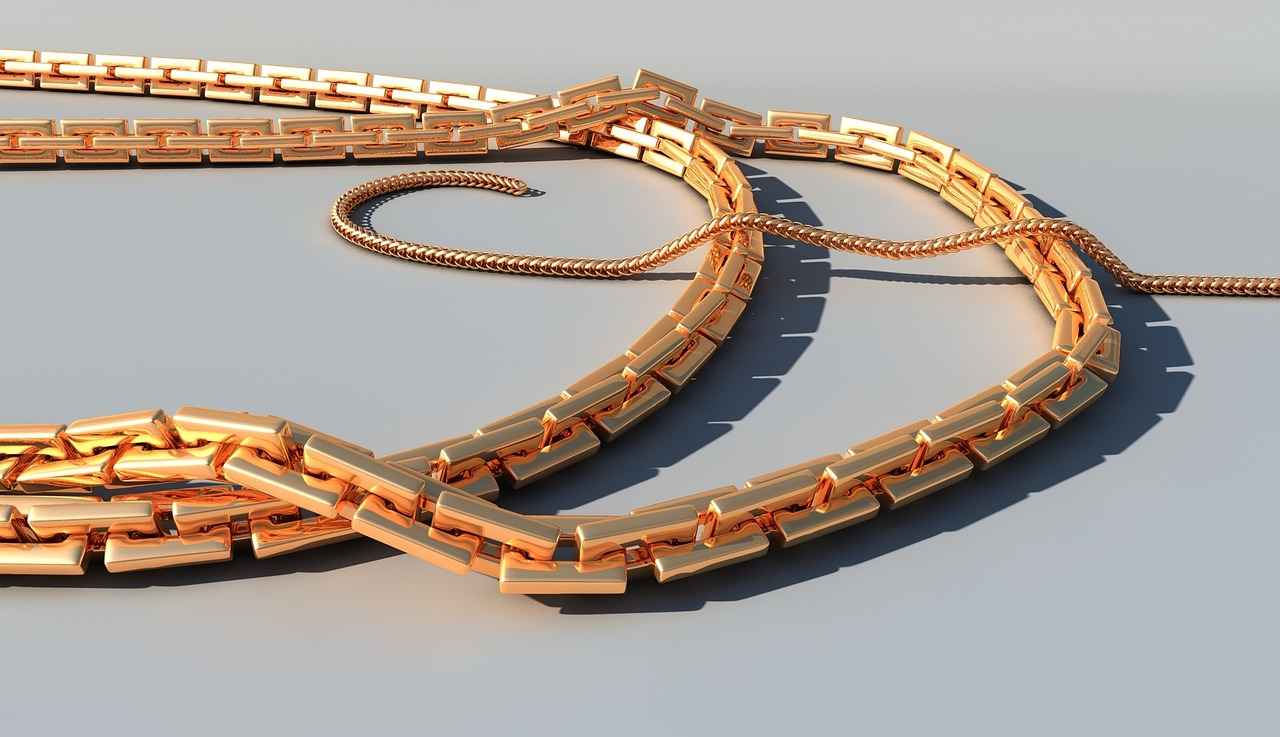
How Does Marketing Shape Brand Prestige?
In the competitive world of luxury goods, effective marketing strategies play a pivotal role in shaping the prestige of designer jewelry brands. These strategies not only influence consumer perception but also establish a brand’s identity in the marketplace. This article delves into various marketing tactics that enhance brand prestige, including collaborations, celebrity endorsements, and targeted advertising.
Collaborations between designer jewelry brands and other luxury labels or artists can create a buzz that elevates brand visibility. Such partnerships often result in unique collections that appeal to a broader audience. For example, when a renowned fashion designer collaborates with a jewelry brand, the fusion of styles can attract both fashion enthusiasts and jewelry collectors. This strategy not only enhances the brand’s prestige but also allows for innovative designs that can set trends in the industry.
Celebrity endorsements are a powerful marketing tool that can significantly impact a brand’s prestige. When a well-known figure wears or promotes a jewelry piece, it can create an aspirational image for consumers. This phenomenon is rooted in the psychological principle of association; consumers often associate the luxury and glamor of the celebrity with the brand itself. For instance, if a beloved actress is seen wearing a particular designer’s jewelry at a major event, it can lead to increased demand and heightened status for the brand.
Targeted advertising is crucial in reaching the right audience. By utilizing data analytics and consumer insights, designer jewelry brands can tailor their marketing messages to resonate with specific demographics. This approach ensures that the advertising efforts are not only effective but also efficient, maximizing the return on investment. For example, social media platforms allow brands to create targeted ads that reach potential customers based on their interests, behaviors, and demographics.
In today’s digital landscape, social media has become an essential tool for luxury brands. Jewelry brands leverage platforms like Instagram and TikTok to showcase their products, often collaborating with influencers who align with their brand values. Influencers can provide authentic endorsements that resonate with their followers, helping to build trust and credibility for the brand. This strategy not only enhances visibility but also fosters a community around the brand, making it more relatable to consumers.
Participating in high-profile events, such as fashion weeks or charity galas, allows designer jewelry brands to gain significant visibility. Sponsorships of prestigious events can further enhance a brand’s status, associating it with luxury and exclusivity. These events serve as platforms for brands to showcase their latest collections to a captive audience, often resulting in media coverage that amplifies their reach and prestige.
Effective storytelling is another vital component of marketing that can elevate a brand’s prestige. By sharing the history, craftsmanship, and inspiration behind each piece, jewelry brands can create an emotional connection with consumers. This narrative not only highlights the exclusivity of the brand but also reinforces its heritage and values. Consumers are more likely to invest in a brand that resonates with them on a personal level, making storytelling an invaluable marketing strategy.
In conclusion, the interplay of various marketing strategies, including collaborations, celebrity endorsements, targeted advertising, and effective storytelling, significantly shapes the prestige of designer jewelry brands. By strategically leveraging these elements, brands can establish a strong identity, foster consumer loyalty, and ultimately thrive in the competitive luxury market.
What Role Do Social Media and Influencers Play?
In the rapidly evolving landscape of marketing, social media and influencers have emerged as powerful forces shaping consumer perceptions and behaviors. As brands strive to maintain their prestige and relevance, leveraging these platforms has become essential.
Social media platforms like Instagram, TikTok, and Pinterest serve as visual showcases for designer jewelry brands. These platforms allow brands to connect with audiences in real-time, showcasing their exclusivity and craftsmanship. By sharing high-quality images and engaging content, brands can create a narrative that resonates with their target demographic.
Influencers act as trusted intermediaries between brands and consumers. Their endorsements can significantly impact consumer trust and purchasing decisions. When a well-known influencer shares their experience with a designer jewelry piece, it not only enhances the brand’s visibility but also lends credibility to its claims of quality and exclusivity.
- Sponsored Posts: Brands often pay influencers to create content featuring their products, ensuring that the jewelry is showcased in a desirable context.
- Affiliate Marketing: Influencers earn commissions on sales generated through their unique referral links, incentivizing them to promote the brand actively.
- Exclusive Collaborations: Partnering with influencers to create limited edition pieces can generate buzz and exclusivity, appealing to consumers’ desires for unique items.
User-generated content (UGC) plays a crucial role in shaping brand perception. When consumers share their own photos wearing designer jewelry, it creates a sense of community and authenticity around the brand. This organic promotion can often be more influential than traditional advertising, as potential customers see real people enjoying the products.
While the benefits of using social media and influencers are evident, there are risks involved. A misstep in a campaign or an influencer’s controversy can negatively impact a brand’s image. It is vital for brands to choose their partners wisely and maintain a consistent message that aligns with their values.
To assess the effectiveness of their social media strategies, brands utilize various metrics, including:
- Engagement Rates: Likes, shares, and comments indicate how well content resonates with audiences.
- Conversion Rates: Tracking sales generated from social media campaigns helps determine ROI.
- Brand Sentiment: Monitoring consumer feedback and sentiment can gauge the overall perception of the brand.
In conclusion, the role of social media and influencers in the luxury jewelry market cannot be overstated. As brands continue to navigate this digital landscape, understanding the dynamics of these platforms will be crucial for maintaining their prestige and appeal.
How Do Events and Sponsorships Enhance Visibility?
Participating in high-profile events and sponsorships is a crucial strategy for designer jewelry brands to enhance their visibility and prestige. These activities not only showcase the brand’s exquisite craftsmanship but also align them with the luxurious lifestyles that their target audience aspires to.
- Elevating Brand Image: By associating with prestigious events such as film festivals, fashion weeks, and charity galas, jewelry brands can elevate their image. The glamour and exclusivity of these occasions provide a perfect backdrop for showcasing their unique creations, which are often worn by celebrities and influencers.
- Creating Lasting Connections: Sponsorships allow brands to forge connections with influential figures in the fashion and entertainment industries. These relationships can lead to collaborations that amplify the brand’s reach and desirability.
- Engaging Target Audiences: Events provide a platform for brands to directly engage with their target audience. Through interactive displays and personalized experiences, potential customers can appreciate the artistry and quality of the jewelry firsthand.
Building Brand Loyalty
When designer jewelry brands participate in high-profile events, they not only gain visibility but also build brand loyalty. Consumers who witness their favorite celebrities adorned in these luxurious pieces often feel a deeper connection to the brand. This connection can translate into increased sales, as customers are more likely to purchase items associated with their admired public figures.
Leveraging Social Media
In today’s digital age, social media plays a pivotal role in amplifying the visibility gained from events and sponsorships. Brands can share captivating content—such as behind-the-scenes footage, red carpet moments, and influencer endorsements—across various platforms. This strategy not only reaches a broader audience but also creates an engaging narrative around the brand, enhancing its prestige.
- Real-Time Engagement: Social media allows brands to interact with their audience in real-time, fostering a sense of community and excitement around their participation in events.
- Visual Storytelling: High-quality images and videos from events can be used to tell a compelling story about the brand’s heritage, craftsmanship, and exclusivity.
Reinforcing Luxury Status
The luxury jewelry market is built on perceptions of exclusivity and prestige. By aligning with high-profile events, designer brands reinforce their status as purveyors of luxury. This association not only enhances their reputation but also solidifies their place in the competitive landscape of luxury goods.
In summary, events and sponsorships serve as vital tools for designer jewelry brands to enhance their visibility and prestige. By carefully selecting the events they participate in and leveraging social media to amplify their presence, these brands can effectively connect with their target audience, reinforce their luxury status, and ultimately drive sales. The strategic integration of these elements ensures that designer jewelry remains a coveted symbol of elegance and sophistication in the ever-evolving luxury market.
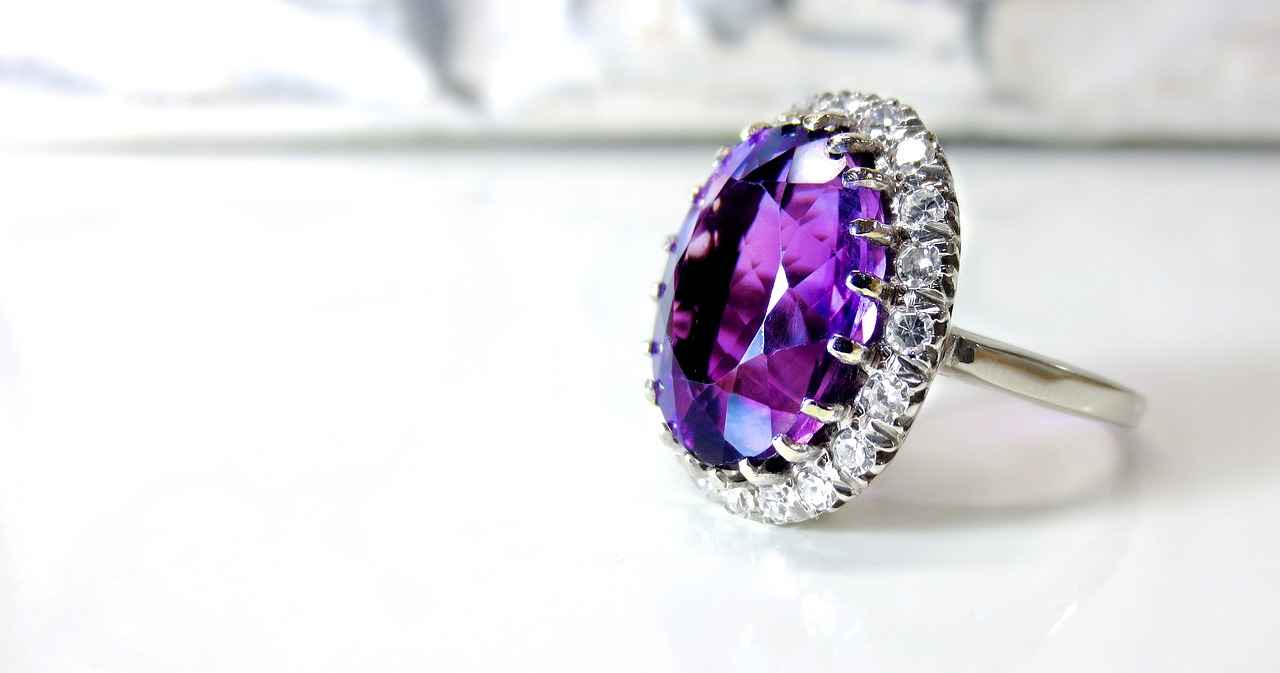
What Cultural Significance Do Designer Jewelry Brands Hold?
Designer jewelry is not merely a collection of beautiful pieces; it is a reflection of cultural values and a marker of social status. The significance of these adornments extends beyond their aesthetic appeal, as they often encapsulate the heritage and identity of the wearer. In this exploration, we delve into the cultural importance of designer jewelry brands and how they shape perceptions in society.
Jewelry has historically been a means of expressing identity, wealth, and heritage. Designer jewelry brands, in particular, have carved out a unique niche in this realm. They are often associated with luxury and exclusivity, making them desirable among affluent consumers. But what drives this allure?
Jewelry trends are often a mirror of societal shifts. For example, during periods of economic prosperity, consumers may gravitate towards more extravagant and ornate designs. Conversely, in times of uncertainty, there may be a shift towards minimalist and sustainable pieces. This dynamic nature of jewelry trends illustrates how societal values and economic conditions influence consumer preferences.
In today’s world, celebrities and influencers play a pivotal role in shaping the prestige of designer jewelry brands. When a high-profile figure is seen wearing a specific brand, it can instantly elevate the brand’s status. This phenomenon not only boosts sales but also reinforces the cultural significance of jewelry as a status symbol.
The heritage of a jewelry brand adds layers to its cultural significance. Brands with a rich history often evoke a sense of nostalgia and authenticity, making their pieces more desirable. Consumers are drawn to the stories behind the jewelry, which can include everything from the origin of materials to the artisanal techniques used in creation.
As consumers become increasingly aware of ethical issues, sustainability has emerged as a critical factor in the luxury market. Designer jewelry brands that prioritize sustainable practices not only appeal to a conscious audience but also redefine cultural values associated with luxury. This shift reflects a growing societal emphasis on responsibility and ethical consumption.
Many designer jewelry pieces incorporate cultural symbols that resonate with specific communities. These symbols can represent heritage, beliefs, or significant milestones. By embedding these elements into their designs, brands not only enhance their cultural relevance but also foster a deeper connection with consumers.
Designer jewelry brands often participate in prestigious events, such as fashion weeks or charity galas, to enhance their visibility and reinforce their status. These events provide a platform for showcasing new collections and connecting with influential figures in the industry, further solidifying their cultural significance.
Effective marketing strategies are crucial in establishing the prestige of designer jewelry brands. By leveraging traditional advertising, social media, and collaborations with artists, brands can create a narrative that resonates with consumers. This storytelling aspect not only enhances brand loyalty but also elevates the cultural significance of their pieces.
In conclusion, designer jewelry brands hold substantial cultural significance, serving as symbols of identity, status, and values. Their ability to adapt to societal changes, embrace sustainability, and connect with consumers through storytelling ensures their relevance in an ever-evolving market. Understanding these dynamics can provide valuable insights into the enduring allure of designer jewelry.
How Do Jewelry Trends Reflect Societal Changes?
Jewelry trends serve as a fascinating lens through which we can observe the shifting dynamics of society. As cultural values evolve, so too do the styles and preferences in jewelry, making it a vibrant reflection of contemporary life. This connection between jewelry trends and societal changes highlights the dynamics of designer jewelry within modern culture.
Throughout history, jewelry has often been influenced by significant social movements. For instance, the rise of feminism in the 20th century saw an increase in bold, statement pieces that symbolize empowerment and individuality. Jewelry designers began to create pieces that not only adorned but also conveyed messages, making them powerful symbols of change.
Advancements in technology have revolutionized the jewelry industry, allowing for innovative designs and production methods. The introduction of 3D printing, for example, has made it possible for designers to experiment with complex structures that were previously unattainable. This technological evolution reflects a society that values creativity and innovation, pushing the boundaries of traditional craftsmanship.
The economic climate significantly impacts consumer spending habits, which in turn influences jewelry trends. During economic downturns, consumers may gravitate towards more affordable, minimalist designs, whereas in times of prosperity, extravagant and luxurious pieces often gain popularity. This fluctuation highlights how jewelry is not just a form of self-expression but also a reflection of economic realities.
As societies become increasingly multicultural, jewelry trends are enriched by diverse cultural influences. Designers are now incorporating elements from various cultures, leading to unique pieces that celebrate heritage and identity. This blending of styles not only enhances the aesthetic appeal but also fosters a greater understanding and appreciation of different cultural narratives.
In recent years, there has been a marked shift towards sustainability in the jewelry industry. Consumers are becoming more conscious of the environmental and ethical implications of their purchases, prompting brands to adopt responsible sourcing and production practices. This trend reflects a broader societal shift towards conscious consumerism, where individuals prioritize ethical considerations alongside aesthetics.
Social media platforms have become powerful tools for shaping jewelry trends. Influencers and celebrities showcase their jewelry choices online, often setting trends that resonate with their followers. This digital influence allows for rapid dissemination of styles, making it crucial for brands to stay agile and responsive to emerging trends. The interactivity of social media also enables consumers to express their preferences, further driving the evolution of jewelry design.
Fashion trends and jewelry styles are inextricably linked. As clothing styles change, so do the accompanying accessories. For instance, the resurgence of vintage fashion has led to a revival of retro jewelry styles, while contemporary minimalist fashion has popularized sleek, understated pieces. This cyclical relationship underscores the importance of jewelry as a complement to overall fashion aesthetics.
In conclusion, jewelry trends are a dynamic reflection of societal changes, influenced by cultural, economic, and technological factors. As we continue to navigate an ever-evolving landscape, the jewelry industry remains a vibrant testament to the complexities of human expression and identity.
What Is the Role of Sustainability in Modern Luxury?
In recent years, the luxury jewelry industry has witnessed a significant transformation, largely driven by the increasing demand for sustainability among consumers. As environmental awareness grows, designer jewelry brands are adapting their practices to meet the expectations of a more conscious audience. This evolution not only enhances the brand’s prestige but also aligns with the values of today’s consumers.
Sustainability in luxury jewelry is not merely a trend; it represents a fundamental shift in how brands operate. Consumers are becoming more informed and are actively seeking brands that demonstrate a commitment to ethical practices. This includes sourcing materials responsibly, ensuring fair labor practices, and minimizing environmental impact. By embracing sustainability, designer jewelry brands can build stronger relationships with their customers, fostering loyalty and trust.
Many designer jewelry brands are taking proactive steps to incorporate sustainability into their operations. This includes:
- Ethical Sourcing: Brands are increasingly opting for conflict-free diamonds and recycled metals. This not only ensures that materials are sourced responsibly but also appeals to consumers who prioritize ethical considerations.
- Transparency: Companies are providing detailed information about their sourcing and manufacturing processes. This transparency allows consumers to make informed choices, reinforcing their connection to the brand.
- Innovative Materials: Some brands are exploring alternative materials, such as lab-grown gemstones and sustainable metals. These innovations can reduce environmental impact while offering unique design possibilities.
Adopting sustainable practices offers numerous benefits for designer jewelry brands:
- Enhanced Brand Image: Brands that prioritize sustainability often enjoy a positive reputation, attracting a loyal customer base that values ethical consumption.
- Increased Market Appeal: As consumers become more environmentally conscious, brands that embrace sustainability can differentiate themselves in a crowded market, appealing to a wider audience.
- Long-Term Viability: Sustainable practices can lead to more efficient operations and reduced costs in the long run, ensuring the brand’s longevity in the competitive luxury market.
Today’s consumers are not just looking for beautiful pieces of jewelry; they are also considering the story behind each item. The integration of sustainability into the jewelry narrative can significantly influence purchasing decisions. Many consumers are willing to pay a premium for products that align with their values, making sustainability a key factor in their choice of brand.
Certifications from recognized organizations can enhance a brand’s credibility in sustainability. Certifications such as Fair Trade or Responsible Jewelry Council provide assurance to consumers that the jewelry meets specific ethical and environmental standards. Brands that actively pursue and promote these certifications can further bolster their prestige and appeal.
The luxury jewelry industry is undergoing a remarkable transformation as brands recognize the importance of sustainability. This shift is not only about meeting consumer demand but also about redefining what luxury means in the modern world. As brands continue to innovate and adapt, the integration of sustainable practices will likely become a standard expectation rather than an exception.
In conclusion, as sustainability becomes a priority for consumers, designer jewelry brands that embrace ethical practices can enhance their prestige and connect with a more conscious audience. This evolution represents a promising future for the luxury jewelry industry, where beauty, craftsmanship, and responsibility coexist harmoniously.
Frequently Asked Questions
- What makes designer jewelry so prestigious?
Designer jewelry is considered prestigious due to its unique combination of brand heritage, exceptional craftsmanship, and the use of high-quality materials. Each piece tells a story and reflects the artistry behind its creation, making it more than just an accessory.
- How does brand heritage affect consumer perception?
The history of a jewelry brand plays a significant role in its perceived prestige. Brands with a rich legacy often evoke trust and desirability, making consumers more inclined to invest in their pieces.
- Why are limited editions so valuable?
Limited editions create a sense of exclusivity and urgency, driving demand. When consumers know that a piece is rare, it enhances its allure and perceived value, making it a coveted item in the luxury market.
- How do marketing strategies influence designer jewelry brands?
Effective marketing, including collaborations and influencer partnerships, helps shape the prestige of designer jewelry brands. These strategies highlight the uniqueness and craftsmanship of the pieces, attracting a wider audience.
- What is the cultural significance of designer jewelry?
Designer jewelry often symbolizes cultural values and social status, transcending mere adornment. It reflects societal trends and changes, making it an integral part of modern luxury culture.

